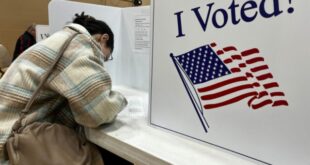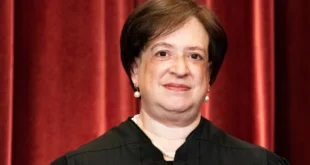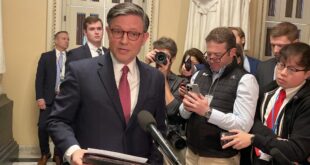Nadra Nittle, Candice Norwood, The 19th
This story was originally published by The 19th
On Monday, the Supreme Court will hear oral arguments in two cases that could end the practice of affirmative action in higher education admissions, which facilitates wider diversity among students.
The cases, Students for Fair Admissions, Inc. v. President and Fellows of Harvard College and Students for Fair Admissions, Inc. v. University of North Carolina (UNC), are the latest test in a decades-long effort to end schools’ ability to consider an applicant’s race among many factors in the admissions process.
With the high court’s 6-3 conservative supermajority, experts told The 19th that the justices are poised to undo legal precedent that has protected affirmative action for more than 40 years. This comes amid other legal and political challenges to diversity efforts in schools, such as teaching about race and LGBTQ+ issues.
Women represent about 60 percent of enrollment in universities and colleges around the country. Among Black students, women make up about 64 percent of bachelor’s degrees and 71 percent of master’s degrees. College-degree attainment for Latinas also outpaces Latinos. About 27 percent of Latinas have a college degree compared to about 21 percent of Latinos. As a result, any decision the Supreme Court makes on affirmative action will disproportionately impact women of color.
Advocates for equity in education are concerned about what the upcoming decision could mean for groups of qualified students who are already underrepresented in the country’s most competitive schools.
“Eliminating all signs of race from the admissions process will unfairly disadvantage applicants of color,” Janai Nelson, president and director-counsel of the NAACP Legal Defense Fund, told reporters in a press call Tuesday. “That deprives all students of the ability to tell their full stories and bring their whole selves to the admissions process.”
Ahead of the arguments before the Supreme Court, The 19th spoke with education policy experts about the history of affirmative action and the significance of these latest cases.
Affirmative action programs saw legal challenges not long after they were first implemented.
The more recent challenges have been spearheaded largely by one conservative man, Edward Blum. For nearly three decades, Blum has worked to find plaintiffs to challenge policies he wants struck down.
“He’s just one of many individuals who have been on the slow and steady march to get rid of a lot of the gains of the civil rights movement,” said Jamel Donnor, a professor of education policy and law at William & Mary. “He’s been moving parallel with the liberal conservative movement, particularly the Federalist Society, and trying to reconfigure the Supreme Court.”
Blum’s efforts included working with Abigail Fisher, who would go on to be the face of two arguments brought before the U.S. Supreme Court in 2013 and 2016. Fisher, a White woman, was denied admission to the University of Texas and alleged that the university’s race-conscious admissions process discriminated against her.
Both times the court upheld the university’s ability to consider race as a factor in admissions.
Blum is once again at the center of two cases pushing for the end of affirmative action.
“He realized that Asian Americans were a group that had not been involved in a high-profile case. He thought there could be an alignment of interests with them and so he recruited a group of plaintiffs to come create this organization called Students for Fair Admissions,” said Julie J. Park, an associate professor of education with the University of Maryland, College Park who also served as a consulting expert in the Harvard case.
Blum created the nonprofit Students for Fair Admissions (SFFA) and it represents an estimated 20,000 students and parents, many of whom are Asian Americans.
By filing similar cases against Harvard and UNC in 2014, SFFA can cover nuances in the law that affect private and public universities in different ways.
“They’re trying to put a bow on this and get a one-two combination punch on affirmative action,” Donnor said. “If you look at prior cases, they primarily focused on public institutions. This is the first time we have a lawsuit against a private institution.”
In both cases, SFFA argues that Harvard and UNC are violating the Equal Protection Clause by failing to consider race-neutral alternatives that could also increase diversity in the student body without putting specific racial groups at a disadvantage.
“The argument that people are making and that is accepted and actually promulgated by members of the court, including Justice Roberts, is that the Equal Protection Clause requires colorblindness or sometimes they also call it race neutrality,” said Lourdes Rosado, president of LatinoJustice, a national civil rights organization. “I, and many civil rights activists, think that that’s wrong.” She added that the 14th Amendment was “designed specifically to make people with less opportunity and less rights equal to White citizens.”
This story has been edited for length. Read the full story at The 19th.
 Poli Alert Political & Civics
Poli Alert Political & Civics



